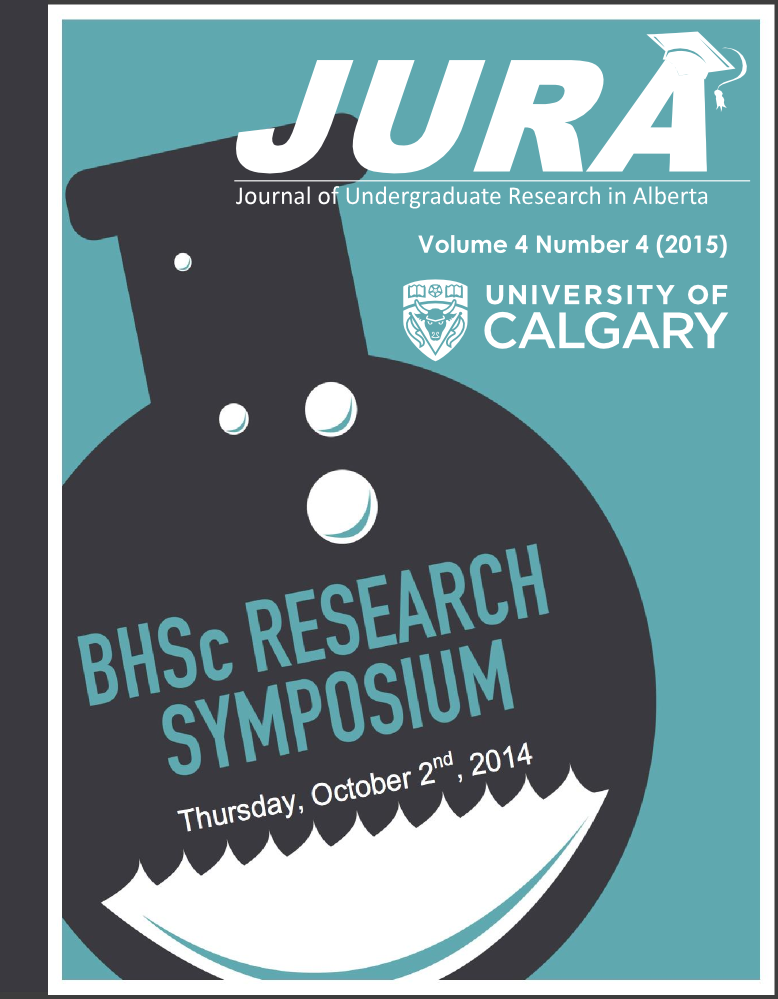DETERMINATION OF INDICATORS OF EPILEPTIC SEIZURE EVENTS ON THE SEIZURE MONITORING UNIT AND THE DEVELOPMENT OF AN ELECTRONIC DATABASE
Keywords:
epilepsy, seizure, unit, indicatorAbstract
INTRODUCTION
Epilepsy is a neurological disorder characterized by recurrent seizures and affects approximately 1% of Canadians. While treatment with medications is often effective, 40% of the 300 000 Canadians suffering from epilepsy are refractory to medications. Furthermore, only 5% of patients with refractory epilepsy respond clinically to additional antiepileptic drug (AED). This group of patients is referred to the Calgary Epilepsy Program (CEP). To clarify diagnoses, optimize therapy or for pre-surgical evaluation, they are subsequently admitted to the Seizure Monitoring Unit (SMU) for on average 8 days. However, over a fifth (21%) of SMU patients do not have seizure events while on the unit. The purpose of this study was first to develop an electronic database for SMU patients and then to utilize patient data to predict the likelihood of their seizure events on the SMU.
METHODS
SMU Admission/Discharge summary forms were created in REDCap, an electronic survey builder. Assessed variables include: demographics, reason for referral, seizure frequency and type, type of medications, procedures performed and tests ordered. Multiple quality of life and depression scales, including: AEP, Bacca Scale, EQ-5D-3L, GADS, GASE, NDDI-E, PANAS, PHQ-9, QOLIE-31 and TSQM-II were added for future data collection.
Patient admission data (n=603) from 2008 to 2014 was analyzed using chi-squared test and Student’s t-test. Patient characteristics, including: age, number of AEDs, seizure frequency and psychotropic medications before admission were compared between those that had seizure events and those that did not have seizure events on the unit. Data was analyzed on iPython Notebook.
RESULTS
Patients with seizure events (n=474) had more AEDs (1.9 ± 1.1 vs 1.6 ± 1.1, p < 0.01), a higher seizure frequency (Daily vs Weekly, p < 0.05) or were less likely to be on psychotropic medications (26.5% vs 44.5%, p < 0.001) before admission. There is no statistically significant correlation between age and the occurrence of seizure events.
DISCUSSION AND CONCLUSIONS
CEP and SMU patient data can now be accessed through a single electronic database to facilitate epilepsy research and patient care. The database linking patient admission data to measurements of patient quality of life, depression and satisfaction will give researchers better insight into treatment outcomes for patients with epilepsy.
The probability of having a seizure event on the SMU is higher with a higher number of antiepileptic drugs (p < 0.01), higher seizure frequency (p < 0.05) or lower number of psychotropic medications (p < 0.001) before admission. The use of pre-admission variables to predict the likelihood of seizure events on the SMU will help improve referral accuracy and reduce unnecessary hospitalization which costs several thousand dollars daily. Continued analysis of other variables includes seizure type, primary reason for referral, type of AED and type of psychotropic medication.
Downloads
Downloads
Additional Files
Published
Issue
Section
License
Authors retain all rights to their research work. Articles may be submitted to and accepted in other journals subsequent to publishing in JURA. Our only condition is that articles cannot be used in another undergraduate journal. Authors must be aware, however, that professional journals may refuse articles submitted or accepted elsewhere—JURA included.


